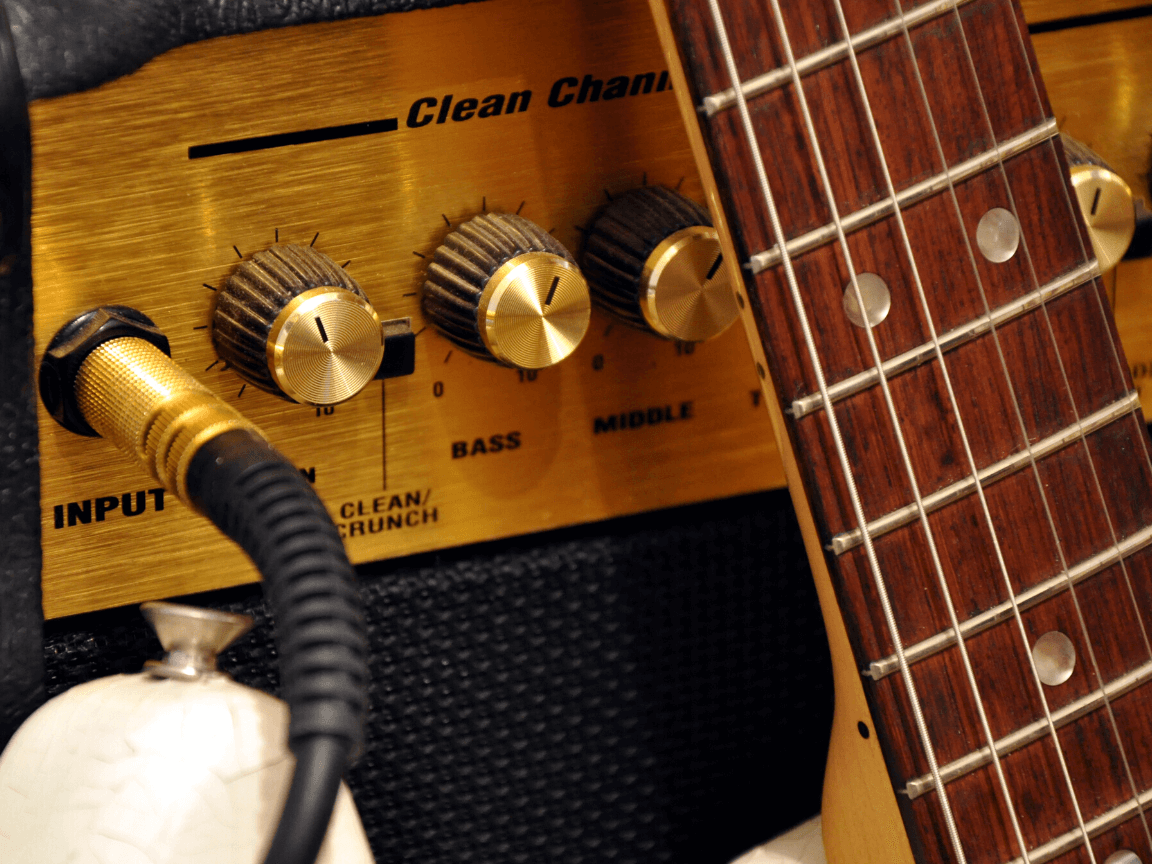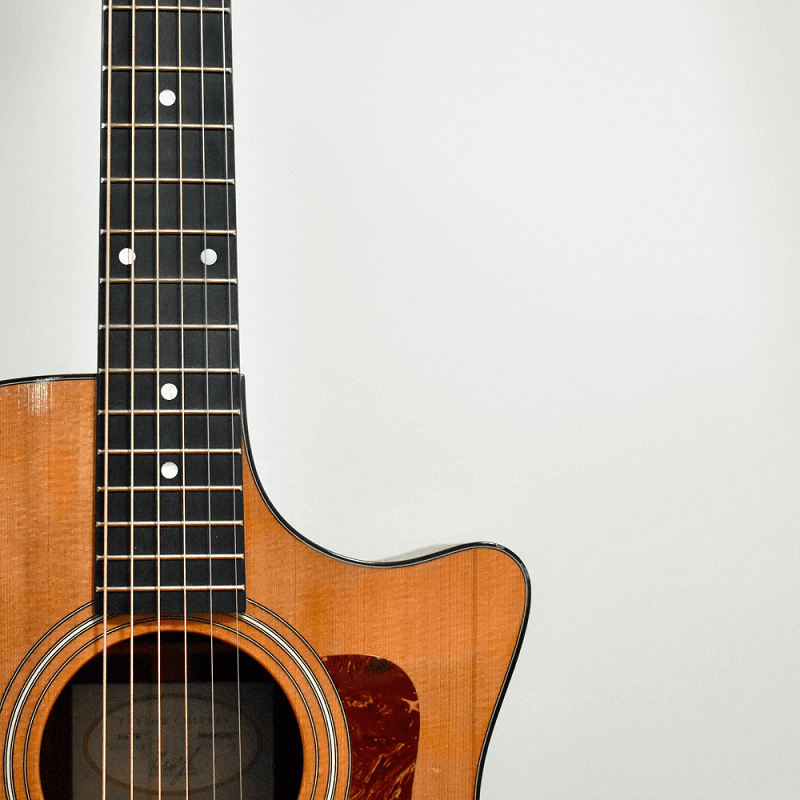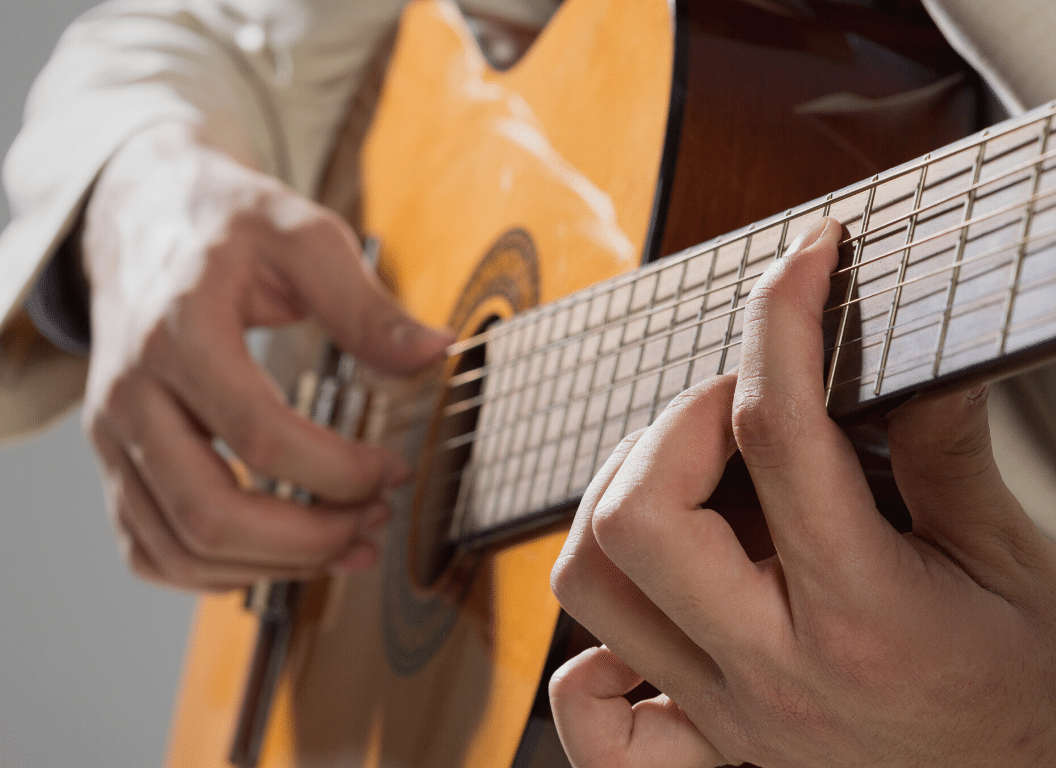Have you ever wondered how guitar amps work?
If you’re a guitarist, you know the importance of having a great amp; it can essentially make or break your sound completely.
In this article, we’ll explore the inner workings of guitar amps and how they help create that signature sound.
We’ll also look at the different components of guitar amps and how they work together to produce sound, plus the different types of amps that you’ll find out there.
Finally, we’ll go over some of the most frequently asked questions on this topic and try to provide some helpful advice and resources.
So, if you’re ready to learn all about guitar amps, let’s get started!
Table of Contents
- How do guitar amps work?
- What is an amplifier?
- Types of Guitar Amplifiers
- The Basic Components of an Amplifier
- Why are guitar amps important?
- What do the controls on a guitar amp do?
- Analog or Digital: Does it even matter?
- Do you need an amp as a beginner?
- Can you play electric guitar without an amp?
- Good guitar vs. good amp: What’s the difference?
- Final thoughts
How do guitar amps work?
Guitar amplifiers take the signal from the guitar and boost it to a level that can be heard through speakers. They use a combination of preamp and power amp stages to achieve this. Preamp stages boost the signal and add tone shaping, while power amp stages take the signal from the preamp and amplify it to a level that can be heard through a speaker. The speaker then converts the electrical signal from the power amp into sound waves.
Aside from this, there are other components that are found in most guitar amps, such as equalizers and tone controls.
Equalizers allow you to boost or cut certain frequencies, while tone controls can be used to shape the sound of your guitar.
There are also effects such as reverb, delay, chorus, flanger, and more that can be added to the signal chain for even more sonic possibilities.
Finally, most guitar amps also have several input and output jacks for connecting other devices such as microphones, headphones, pedals, and recording equipment.
These connections allow you to customize your sound even further.
Now that we’ve gone over the basics of how guitar amps work, let’s dig deeper into this topic and answer other important questions you might have.
What is an amplifier?
An amplifier is an electronic device that is used to increase the magnitude of a signal, such as an audio signal.
It is typically used to increase the volume of a sound but can also be used to increase the power of a signal, such as a radio signal and the one of an electric guitar.
They can be used in a variety of applications, from audio systems to communications systems.
On the other hand, they can also be used to boost the signal from a microphone or other sound source or to increase the power of a signal to be sent over a long distance.
Amplifiers are also used in medical imaging and other scientific applications.
In most cases, an amplifier is used to increase the strength of a signal without changing its characteristics.
It takes the signal, amplifies it, and then sends it out; the amount of amplification can be adjusted to achieve the desired result.
Types of Guitar Amplifiers
Guitar amplifiers are an essential part of any guitarist’s setup, as they are what gives the instrument its sound.
There are many different types of guitar amplifiers, each with its own unique sound and characteristics.
The most common type of guitar amplifier is the solid-state amplifier.
Said type of amplifiers use transistors and other solid-state components to amplify the signal from the guitar.
Solid-state amplifiers are generally more affordable than their tube counterparts and are often used in practice amps and small combo amps.
They are also known for their clean, crisp sound and low maintenance requirements that allows any player to comfotably play in any situation.
On the other side, we also have tube amplifiers, which are the classic choice for guitarists for a long time, I would say.
These amplifiers use vacuum tubes to amplify the signal from the guitar.
Generally, tube amplifiers are known for their warm, smooth sound and are often used in larger combo amps and stacks.
They are typically more expensive than solid-state amplifiers but are also more reliable and require less maintenance.
The Basic Components of an Amplifier
An amplifier is a device that takes a small signal and amplifies it to a larger signal.
It is an essential part of any sound system, and it is composed of several basic components.
The first component is the input stage, which takes an audio signal from a source, such as a microphone, guitar, or CD player, and amplifies it.
The second component is the power stage, which takes the amplified signal and increases its power, allowing it to drive speakers or other audio devices.
The third component is the control stage, which allows the user to adjust the volume, tone, and other parameters of the signal.
Finally, the fourth component is the output stage, which takes the amplified signal and sends it to the speakers or other audio devices.
Each of these components is essential for an amplifier to work properly, and they all work together to provide an amplified signal that can be heard clearly.
1. Preamp
The preamp is an essential component of any audio system in general.
It is responsible for boosting the signal from the source, such as a microphone, guitar, or keyboard, and sending it to the power amplifier.
Preamps are used to control the level of the signal before it reaches the power amplifier, allowing you to adjust the volume, tone, and other aspects of the sound.
They come in many different forms, from standalone units to built-in components of an audio system.
Now, to be more specific, standalone preamps are typically used in recording studios, as they offer more control and flexibility in terms of sound shaping.
Built-in preamps are typically found in home audio systems and are designed to provide a basic level of sound control.
The preamp is also responsible for providing the signal with a certain amount of gain or amplification.
For many, this is important, as it allows the signal to be heard at a higher volume without having to turn up the volume on the power amplifier.
2. Power Amp
The power amp is the final stage of amplification in a chain of audio equipment and is responsible for taking the weak signal from the preamplifier and boosting it to a level that can be used to power loudspeakers.
It is also responsible for controlling the overall volume of the system.
Power amps come in a variety of shapes and sizes and can be either solid-state or tube-based.
Solid-state power amps are typically more reliable, but tube-based power amps are often preferred for their warmer, more musical sound.
They also tend to be more expensive than their solid-state counterparts.
When selecting a power amp, it is important to consider the power requirements of your loudspeakers as they will vary.
The power amp should also be able to provide enough power to drive the loudspeakers at their rated level.
It is also important to consider the type of music you will be playing, as some power amps are better suited for certain genres than others.
3. Speaker
The speaker or loudspeaker is the final part of the amplifier chain and is responsible for producing sound.
Speakers come in a variety of different sizes and shapes, but they all have one common goal: to faithfully reproduce audio signals.
The speaker’s job is to take the amplified signal from the power amp and convert it into sound waves that we can hear.
Speakers are typically placed in cabinets, which are designed to direct the sound outward and provide a better listening experience.
The type of speaker you choose for your system will depend on your specific needs but should be chosen based on power rating, frequency response, sensitivity, and other important factors.
It is also important to make sure that the speaker is compatible with the power amp, as some speakers require a higher wattage to achieve their full potential.
4. Control Stage
The control stage of an amplifier is responsible for providing users with access to the various controls that are available.
Most amplifiers will have knobs or sliders that allow you to adjust the volume and tone of the signal.
These controls can be used to shape the sound and make subtle adjustments to the overall tone of the system.
In addition, many amplifiers also feature an effects loop that allows you to add external effects such as reverb or delay to your signal.
The control stage is important for both live and studio applications, as it allows you to quickly make adjustments on the fly.
Finally, the control stage of an amplifier is also responsible for providing a clean signal to the power amp, which in turn powers the speakers.
Having a well-designed control stage allows users to easily dial in the sound they want without having to worry about distortion or signal loss.
5. Connections
The last component of an amplifier system is the connections.
It includes the various cables and jacks used to connect all of your components together.
Whatever type of connection you use will depend on your specific setup, but it is important to choose high-quality cables that are designed for both audio and power applications.
It is also important to consider the type of connectors you use, as some are designed for specific types of equipment.
Finally, it is important to make sure that all connections are secure and free from any damage or corrosion.
Having a well-constructed connection will ensure that your amplifier system is running smoothly and efficiently at all times.
Why are guitar amps important?
Guitar amps are an integral part of the guitar-playing experience.
They amplify the sound of the guitar so that it can be heard clearly and accurately.
Guitar amps also allow for the sound to be modified and tailored to the player’s individual style and preferences.
With the right amp, guitarists can create a unique sound that is all their own.
Additionally, guitar amps are important because they help to protect the guitar from damage caused by loud volumes.
Without an amp, the guitar would be exposed to loud volumes that could potentially damage the instrument.
Finally, guitar amps are important because they allow guitarists to perform in larger venues and reach a larger audience.
Without an amp, the sound of the guitar would be too quiet to be heard by a large audience.
All in all, guitar amps are an essential tool for any guitarist who wants to get the most out of their instrument.
What do the controls on a guitar amp do?
The controls on a guitar amp are essential for getting the sound you want out of your guitar.
They allow you to adjust the volume, tone, and effects of your guitar.
Volume controls allow you to adjust the overall loudness of the sound coming out of your amp.

Tone controls allow you to adjust the bass and treble frequencies of your sound, giving you the ability to shape your sound to your liking.
Effects controls give you the ability to add effects such as reverb, delay, chorus, and more to your sound.
All of these controls can be used together to create the perfect sound for your guitar playing.
Analog or Digital: Does it even matter?
When it comes to analog or digital, it really depends on the situation and what you are trying to achieve.
Analogue is the traditional way of doing things and involves using physical components to represent information.
Digital, on the other hand, is a more modern approach that uses a combination of hardware and software to represent information in a digital form.
Generally speaking, digital is more efficient and cost-effective than analog, but it also requires more technical knowledge and expertise to use.
So, if you’re looking for a quick and easy solution, analog might be the better choice.
However, digital is likely the way to go if you’re looking for something more advanced and sophisticated.
Ultimately, it comes down to the project’s specific needs and what you are trying to achieve.
Do you need an amp as a beginner?
As a beginner, it’s not necessary to have an amp right away – you can always start off by playing your guitar unplugged.
However, if you’re looking to play with others or in a band, an amp will be essential.

An amp will also give you more control over your sound and allow you to experiment with different tones.
You don’t have to break the bank either, as plenty of affordable amps will do the job.
Just make sure to do your research and find an amp that suits your style and budget.
Can you play electric guitar without an amp?
Yes, you can play electric guitar without an amp.
In fact, it is quite common for guitarists to practice without an amp, as it allows them to focus on their technique and musicality without the distraction of sound.
You can either plug your electric guitar directly into a computer or use headphones to hear your playing.

To do this, you’ll need an audio interface or a direct box to connect your guitar to the computer.
Alternatively, you can use a guitar practice amp, which is a small, battery-powered amp that allows you to practice without disturbing others.
Whichever option you choose, playing electric guitar without an amp can be a great way to hone your skills and become a better player.
Good guitar vs. good amp: What’s the difference?
When it comes to getting the perfect sound out of an electric guitar, it’s important to consider both the guitar and the amplifier.
While a good guitar is essential for producing a quality sound, it’s the amplifier that really brings out the nuances and character of the instrument.
A good guitar will have a well-balanced tone, good intonation, and good action, but without a good amp, it won’t be able to reach its full potential.
A good amp will allow you to shape the sound of your guitar, allowing you to dial in the perfect tone.
It will also provide the necessary power to bring out the full range of tones from your guitar, allowing you to get a wide range of sounds from a single instrument.
Ultimately, a good guitar and a good amp are both essential for getting the best sound out of an electric guitar.
Final thoughts
To summarize, guitar amps are an essential part of the guitar-playing experience, allowing guitarists to control the sound of their instrument and create unique tones.
While the inner workings of a guitar amp can seem complex, the basics are relatively simple – a power amplifier takes the signal from the guitar and amplifies it, while the speaker then converts this amplified signal into sound.
By understanding the basics of how a guitar amp works, guitarists can make better decisions when it comes to selecting the right amp for their needs.
Whether you’re a beginner or a pro, having the right amp can make all the difference in your guitar playing.

More than 10 years of experience playing and writing about guitars! When not writing, I can be found strumming away some Johnny Cash tunes. Favorite all time guitar is the Gibson Les Paul. #TeamGibson




